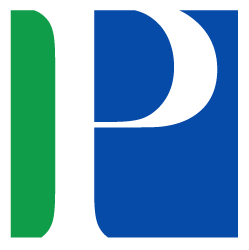Information seeking behavior among public library users: Understanding nature of information searching
Abstract
Aim: The information user’s perception of a need drives their pursuit of information, which in turn causes their demands for formal and informal information sources and services, with the latter ultimately leading to success or failure. People actively seek out information and use it to complete their tasks. The public library’s goal as a piece of information is to serve the community’s information needs. As a result, the public library’s primary function is to meet the informational and cultural requirements of the community at large through the information of materials and services applicable to a wide range of audiences and formats. In most cases, the local, regional, or national community, or the national government, is responsible for establishing, promoting, and funding the Public Library.
Methodology: The purpose of the research is to gain insight into the habits of library users in Kalutara, Horana, Sri Lanka. The study population comprises users who frequent the main library and three satellite locations. Non-probability sampling through the convenience sampling strategy was used to select participants in this survey-based study. There was an 87% participation rate (n = 348).
Findings: The results of this study show that many public library users are part of younger demographics and are students by profession. Most students in the study also regularly used the Horana metropolitan area public library. Therefore, most of their internet research is focused on school-related topics, such as those covered in class. Thus, library programs can be tailored to different demographics of young people.
Implications/Novel Contribution: This research shows that the way information is discovered and the public library’s accessibility are negatively impacted by the library’s lack of resources. Current research indicates that public library administrations will put in place mechanisms to improve patrons’ access to information by modernizing reading services, updating books, expanding existing capacity, recruiting new service members, and providing electronic learning resources. Staff members must be educated appropriately to create a pleasant customer service environment. As a result of this study, we will have a much better grasp of what public library patrons are doing when looking for information. This would be useful for researchers in pinpointing methodological holes they can fill with future investigations.
References
Adelani, R. O. (2002). Information needs and information seeking behaviour of science lecturers in federal college of education, Abeokuta: A case study. Gateway Library Journal, 5(12), 61-68.
Adeniji, M. A. (2007). Information needs and seeking habits of academic staff in ibogun Campus of Olabisi Onabanjo university. Osun State: Gateway Library Journal, 10(2), 127-135.
Bhatnagar, V. (2016). Collaborative filtering using data mining and analysis. California, CA: IGI Global. Conway, V., Brown, J., Hollier, S., & Nicholl, C. (2012). Website accessibility: A comparative analysis of australian national and state/territory library websites. The Australian Library Journal, 61(3), 170-188. doi:https://doi.org/10.1080/00049670.2012.10736059
Fatima, N., & Ahmad, N. (2008). Information seeking behaviour of the students at Ajmal Khan Tibbiya College, Aligarh Muslim University: A survey. Annals of Library and Information Studies, 55(15), 141-144.
Jegan, P., & Jayaprakash, M. (2018). Online information seeking behaviour of faculty members working in arts and science colleges in Madurai District: A Study. Library Philosophy and Practice, 5(7), 1-20.
Mavodza, J. (2011). Information seeking behaviour of library users at metropolitan college of new york. New York, NY: Emerald Group Publishing Limited.
Pareek, A., & Rana, M. S. (2013). Study of information seeking behavior and library use pattern of researchers in the Banasthali University. Library Philosophy and Practice, 5(5), 887-895.
Parta, B. (2013). Use of information resources by senior citizens in public library: A case study of T.S. central state library, Chandigarh. E-Library Science Research Journal, 1(8), 34-50.
Raja, J., Selvam, J., & Poondi, T. (2019). Awareness of information needs and information seeking behaviour of public library users in Thanjavur District: A study. Singaporean Journal of Scientific Research, 11(1), 6-16.
Rinante, L., Genuba, Gaudencio, G., & Abellanosa. (2018.). Identity orientations, 21st century skills and classroom management strategies of teachers: A structural equation model on the student engagement. Journal of Advances in Humanities and Social Sciences, 4(3), 127-136. doi:https://doi.org/10.20474/jahss-4.3.2
Sharifabadi, S. R. (2006). How digital libraries can support e-learning. The Electronic Library, 24(3), 389-401. doi:https://doi.org/10.1108/02640470610671231
Singh, K. P., & Satija, M. P. (2006). A review of research on information seeking behaviour of agricultural scientists: International perspectives. Journal of Library & Information Technology,, 26(2), 45-50.
United Nations Educational, Scientific and Cultural Organization. (1994). Public library manifesto. Retrieved from https://bit.ly/3f5ds2j
Wijetunge, P. (2000). The role of public libraries in the expansion of literacy and lifelong learning in Sri Lanka. New Library World, 101(3), 104-111. doi:https://doi.org/10.1108/03074800010324558
Wilson, T. D. (2000). Human information behavior. Informing Science, 3(2), 49-56.
Wu, A. A. (2017). A study on learning achievement of integrated songs of Chinese history dynasties into Chinese language teaching at third grade in junior college. International Journal of Humanities, Arts and Social Sciences, 3(5), 192-196. doi:https://doi.org/10.20469/ijhss.3.20001-5
Yi, Y. J. (2015). Consumer health information behavior in public libraries: A qualitative study. The Library Quarterly, 85(1), 45-63.

This work is licensed under a Creative Commons Attribution-NonCommercial 4.0 International License.












.png)










